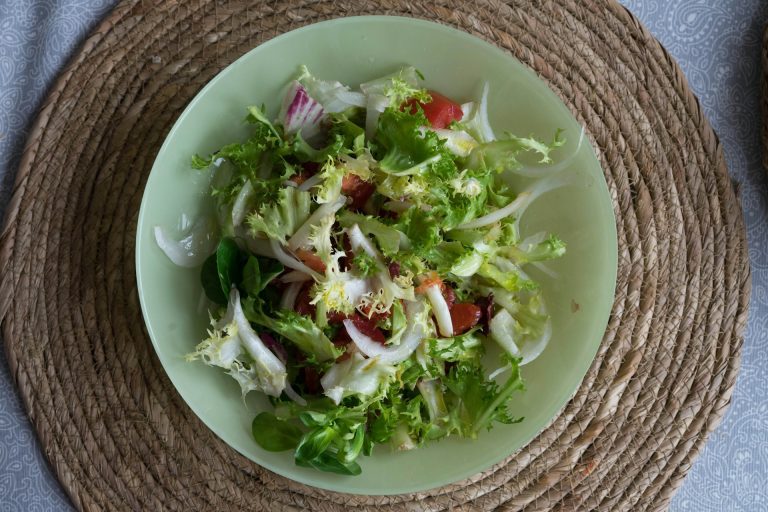In today’s wellness-driven culture, “superfoods” have become one of the most talked-about concepts in nutrition. From kale smoothies to acai bowls, health enthusiasts and influencers often promote these foods as near-magical solutions to vitality and longevity. The term itself carries an aura of superiority, suggesting that certain foods can deliver extraordinary health benefits compared to the rest. However, behind the marketing and trendiness, a deeper question arises: are superfoods truly essential for health, or can everyday foods provide just as much—if not more—nutritional value when consumed thoughtfully? Understanding what actually makes a diet healthy requires peeling back the labels, examining the science, and exploring how balance and consistency matter more than buzzwords.
The Rise of the Superfood Phenomenon
The term “superfood” is relatively new, popularized by marketing rather than science. Originally, it was used to describe foods rich in nutrients believed to offer exceptional health benefits—such as blueberries, quinoa, and chia seeds. As the wellness industry grew, so did the fascination with exotic-sounding ingredients from faraway places. Suddenly, items like goji berries from China, spirulina from the ocean, and maca root from Peru became staples in health-conscious diets across the globe.
This trend was fueled by a growing awareness of chronic diseases linked to poor eating habits, such as obesity, diabetes, and cardiovascular conditions. Consumers started looking for easy ways to improve health through food, and the idea of a “superfood” fit perfectly into that narrative. However, while many of these foods are indeed nutrient-dense and beneficial, the concept can sometimes be misleading. No single food, no matter how nutrient-packed, can compensate for an otherwise unbalanced diet.
- Thanks to Ben Flynn, Marketing Manager at 88Vape
What Defines a Superfood?
Scientifically, there’s no official definition of a superfood. It’s a term coined by the food industry and popular media rather than health authorities or nutrition experts. Generally, a superfood is one that contains high levels of vitamins, minerals, antioxidants, fiber, and healthy fats. Foods like blueberries, salmon, kale, and almonds often make the list because they are dense in nutrients and associated with disease prevention.
Antioxidants, in particular, play a significant role in why many superfoods are praised. These compounds help neutralize free radicals—unstable molecules that can damage cells and contribute to aging and diseases like cancer. For example, dark chocolate and berries are high in flavonoids, which support heart health and cognitive function. Leafy greens such as spinach and kale contain phytonutrients that protect against inflammation and oxidative stress.
Still, it’s crucial to note that these nutrients are not exclusive to superfoods. In fact, similar compounds can be found in many everyday foods that are less expensive and more widely available. The distinction lies more in perception than in actual nutritional superiority.
The Power of Everyday Foods
While superfoods often steal the spotlight, everyday foods—such as apples, carrots, beans, and oats—quietly deliver essential nutrients that are just as vital for health. These are the unsung heroes of nutrition, often overlooked because they lack the exotic appeal or marketing hype of their “super” counterparts. Yet, the foundation of a healthy diet depends far more on consistent intake of these ordinary foods than on occasional consumption of trendy ingredients.
Take apples, for instance. They’re rich in fiber and vitamin C, support digestion, and promote heart health. Oats, another humble staple, contain beta-glucans—compounds that help lower cholesterol and stabilize blood sugar levels. Beans and lentils, often ignored in favor of quinoa or chia seeds, are excellent plant-based protein sources that provide iron, folate, and fiber.
What makes these everyday foods powerful is their accessibility and versatility. They form the basis of many traditional diets around the world that have been linked to longevity and well-being, such as the Mediterranean and Japanese diets. These cuisines rely on simple, wholesome ingredients—fruits, vegetables, whole grains, legumes, and fish—consumed in moderation and balance.
The Marketing Myth Behind Superfoods
Superfoods gained massive popularity because they’re easy to market. It’s much simpler to sell a product labeled “superfood” than to promote the less glamorous but equally important idea of eating a balanced diet. This marketing often leads to overpricing and overhype, causing consumers to believe they need to purchase expensive imported items to be healthy.
For example, acai berries, often touted as a miracle fruit, are rich in antioxidants—but so are local berries like blueberries, strawberries, and raspberries. Similarly, quinoa is praised for its protein content, yet lentils and beans offer comparable nutritional benefits at a fraction of the cost. Many of these so-called superfoods come from distant regions, leading to sustainability and accessibility issues.
The “superfood” label can also create an illusion of health, where people may believe that consuming these foods occasionally can offset an otherwise unhealthy lifestyle. True wellness, however, is built on everyday habits rather than sporadic indulgence in high-profile ingredients.
Nutrient Synergy: The Real Secret to Health
One of the most overlooked aspects of nutrition is that the human body thrives on synergy—the interaction between different nutrients. Health doesn’t come from individual foods but from how nutrients work together within a diverse and balanced diet.
For instance, vitamin C enhances the absorption of iron from plant-based foods, making it beneficial to pair spinach (rich in iron) with citrus fruits. Similarly, healthy fats from olive oil or nuts help absorb fat-soluble vitamins like A, D, E, and K found in vegetables. This interplay of nutrients emphasizes that eating a variety of foods—both “super” and “ordinary”—is far more effective than focusing on a few isolated items.
Therefore, a truly healthy diet prioritizes diversity. Incorporating a rainbow of foods ensures that the body receives a broad spectrum of nutrients needed for optimal function. Instead of obsessing over superfoods, people can benefit more by eating balanced meals that include whole grains, lean proteins, fruits, vegetables, and healthy fats.
- Thanks to Alex Constantinou – MD at The Fitness Circle
Cultural and Economic Perspectives
The obsession with superfoods has cultural and socioeconomic implications as well. In many parts of the world, traditional diets already contain nutrient-dense foods that have sustained populations for generations. For example, lentils and chickpeas in South Asia, maize and beans in Latin America, or fish and seaweed in Japan—all provide the same benefits that “superfoods” are praised for in Western markets.
However, globalization and marketing trends have led some people to abandon these local, affordable options in favor of imported alternatives perceived as healthier. This not only affects cultural food heritage but also contributes to economic inequality and environmental strain. Transporting exotic foods across continents increases the carbon footprint, whereas local produce supports community farmers and sustainability.
By recognizing the value of local everyday foods, consumers can make choices that are not only nutritionally sound but also socially responsible and environmentally conscious.
The Psychological Impact of Food Labels
Food labels can significantly shape our perception of health. When we see something labeled as “superfood,” it creates a psychological bias that influences our choices. This phenomenon, known as the “health halo effect,” leads people to overestimate the benefits of certain foods while overlooking their calorie content or other factors.
For instance, smoothie bowls made with superfood ingredients like acai and coconut may still be high in sugar and calories, depending on how they’re prepared. Similarly, snacks marketed as containing chia or quinoa can still be ultra-processed and lack real nutritional value.
This highlights the importance of reading nutrition labels and understanding the overall composition of food rather than relying solely on marketing claims. A truly healthy diet is one that maintains a balance between nutrients, portion control, and mindful eating.
How to Create a Balanced Diet
A diet that promotes long-term health doesn’t require superfoods; it requires consistency and balance. The foundation lies in eating whole, minimally processed foods that provide all macronutrients—carbohydrates, proteins, and fats—in appropriate proportions. Incorporating fruits, vegetables, lean proteins, whole grains, and healthy fats ensures that the body receives the nutrients it needs.
It’s also vital to focus on meal timing and portion sizes. Overeating—even healthy foods—can lead to imbalances and weight gain. Similarly, skipping essential nutrients or following restrictive fads can create deficiencies. Drinking plenty of water, limiting added sugars, and moderating alcohol intake further contribute to overall wellness.
Physical activity complements good nutrition by improving metabolism, cardiovascular health, and mental clarity. Together, a balanced diet and an active lifestyle form the cornerstone of sustainable health.
Superfoods in Moderation: A Balanced View
While it’s important not to overvalue superfoods, dismissing them entirely would be unfair. Many of these foods genuinely offer exceptional nutrient density and can be valuable additions to a healthy diet. The key is moderation and context. Superfoods should enhance, not define, one’s nutrition.
For instance, adding chia seeds to oatmeal boosts omega-3 fatty acids and fiber, while including kale or spinach in daily meals adds vital antioxidants and minerals. Turmeric, known for its anti-inflammatory properties, can be easily incorporated into soups, teas, or curries. These foods are most effective when they complement a diet already rich in variety.
Therefore, the healthiest approach is to merge the benefits of both worlds—enjoying superfoods for their unique properties while relying on everyday foods for stability and nourishment.
The True Definition of a Healthy Diet
Ultimately, what makes a diet healthy is not whether it includes superfoods, but how it supports overall well-being, sustainability, and balance. A healthy diet is one that fuels the body, stabilizes energy levels, supports immune function, and maintains long-term vitality without causing stress or restriction.
The best diets are sustainable—both personally and environmentally. They align with an individual’s cultural background, preferences, and lifestyle. Eating well should be enjoyable, not burdensome. Food is not just fuel; it’s also a source of connection, tradition, and pleasure.
- Thanks to Emily Peterson, CEO of Saranoni
Conclusion
In the debate between superfoods and everyday foods, the winner is clear: both play a role, but neither should dominate. True health comes from consistency, diversity, and mindful eating rather than chasing trends. Everyday foods provide the foundation, while superfoods can serve as nutritional bonuses.
Rather than seeking miracle ingredients, it’s wiser to build a diet that reflects balance, moderation, and awareness of one’s unique needs. Eating colorful, minimally processed foods, staying hydrated, and maintaining an active lifestyle are the real “super” habits that ensure long-term health.
In the end, a healthy diet is not defined by a label—but by the daily choices we make, one meal at a time.


